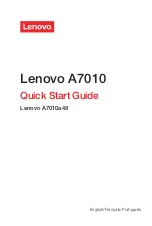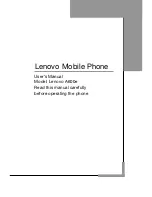
TM200
SERVICING CONCERNS
i
CONFIDENTIAL
SERVICING CONCERNS
1.
When requested, back up user’s handset data using SPST (SHARP Program Support Tool). Otherwise, before servicing, warn the user that data
in the memory may be lost during repairs.
2.
Upgrade the firmware to the latest version using SPST before returning the handset to the customer.
3.
After repairs, inspect the handset according to the following flowchart.
4
4
4
4
4.
When storing or transporting a PWB, put it into a conductive bag or wrap it in aluminum foil.
(C-MOS IC may be damaged by electrostatic charges.)
5.
Do not leave fingerprints, etc. on ornamental parts including a cabinet, especially clear windows for main and sub displays.
Wear fingerstalls to avoid this.
Also, ensure not to leave fingerprints on the surface of main and external display panels.
6.
To prevent oxidation which causes connection problems, do not touch any terminals on the electric board,
microphone, vibrator, earpiece and speaker.
When handling these parts, wear fingerstalls. Should you touch these parts, clean them with a soft dry cloth.
Always wear fingerstalls when handling a shield case on the electric board.
Otherwise oxidation may occur causing handset performance deterioration.
7.
The FPC is a precision device. Handle it carefully to prevent any damages.
8.
Do not expose the moisture sensor to liquids.
If the sheet gets wet, red ink runs. In this case, replace the sheet with a new one.
Be careful about your perspiration.
9.
Before you disassemble or reassemble handset, make sure to remove the Li-Ion battery.
10. Be sufficiently careful with static electricity of integrated circuits and other circuits. Wear static electricity prevention bands while servicing.
Repairs are completed.
(Fixed parts have been checked for proper operation.)
Check IMEI No./Operator code (Destination)/
Firmware version by Identity function of SPST.
Inspect each device using performance check adjustment function of SPST.
Carry out RF performance check with SPST.
All completed.



































